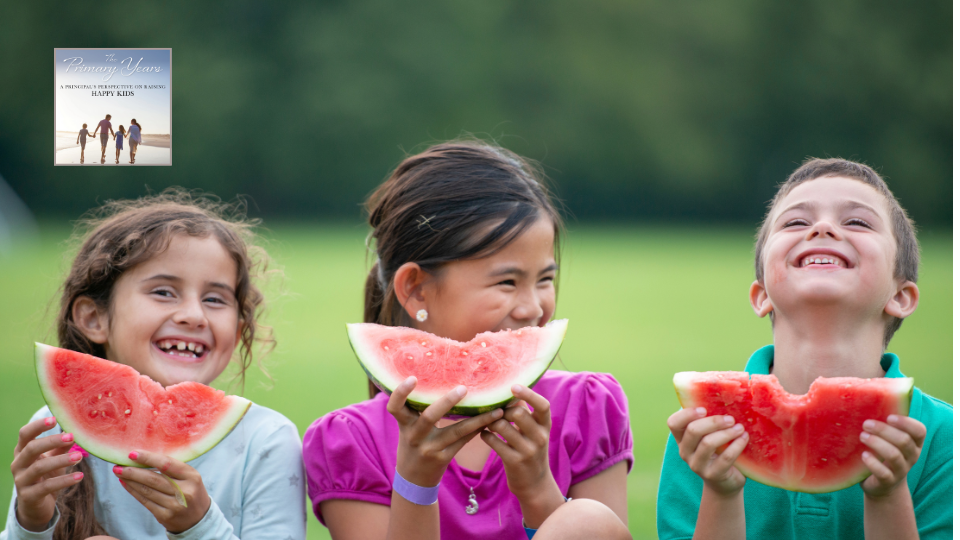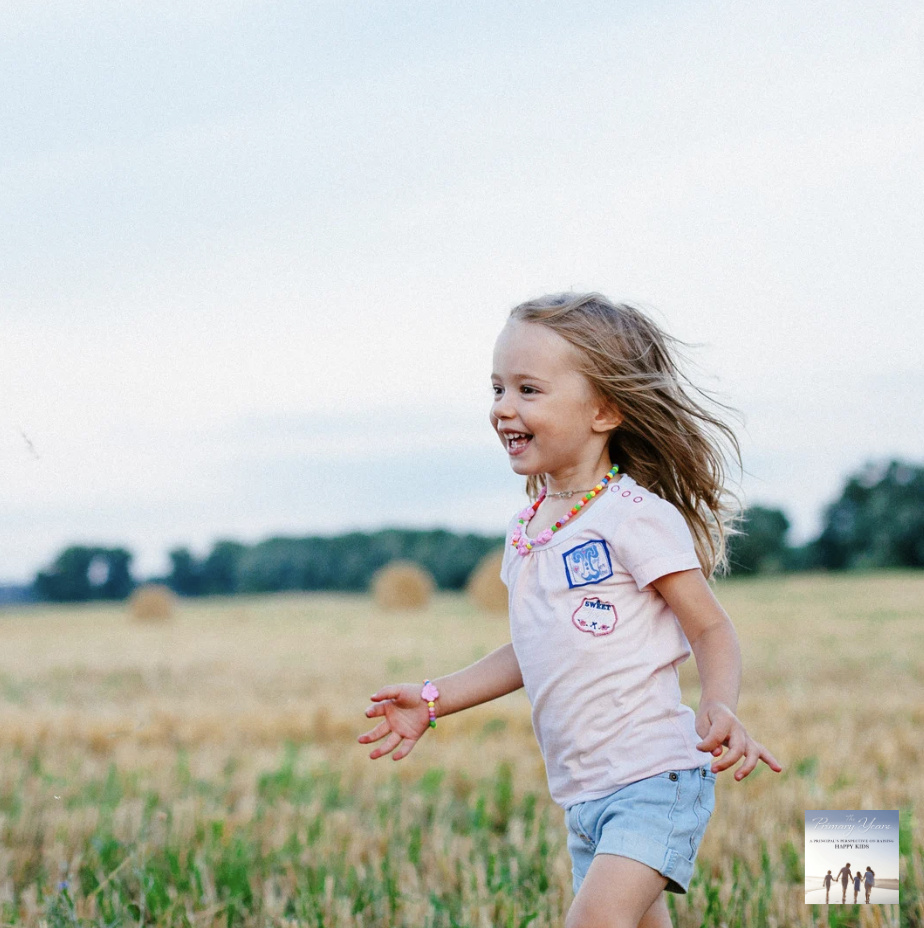Encourage a Wide Net of Friends: Why It Matters.
Friendships are key to a child’s happiness, but relying on just one best friend can lead to heartbreak. Gail Smith highlights why encouraging kids to embrace new friendships is so important.
Friendships are essential for a child’s happiness, but relying on just one best friend can lead to heartbreak. Encouraging a variety of friendships helps children grow socially and emotionally. They are also more receptive to accepting difference.
Less Heartbreak, More Support – If one friend is absent or drifts away, your child won’t feel alone.
Stronger Social Skills – Different friends mean learning to communicate and connect in new ways.
Confidence Booster – A mix of friendships builds self-esteem and reduces social anxiety.
More Fun, Less Drama – Group play means fewer fallouts and more opportunities for joy.
Life-Long Resilience – Adapting to different personalities prepares children for real-world relationships.
Encourage your child to be open to new friendships—it builds a stronger, happier, and more adaptable future! Avoid being judgmental or critical of friends they choose. In time they will work through who are truly friends.
“A friend is someone who gives you total freedom to be yourself.”
What brings joy to you and your child?
The more we share joy with our children, the deeper and richer connection we make with them. Sharing joy triggers a host of significant physiological and psychological changes that improve our physical and mental health. Gail Smith shares some examples of what brings joy to your child.
It doesn’t take much for a child to feel joy. We can always help them feel that joy by our own actions. The more we share that joy the deeper and richer connection we make with our child. It also makes us very happy. It triggers a host of significant physiological and psychological changes that improves our physical and mental health.
Here are some examples of what brings joy to your child. Embrace it!
Seeing Your Child Laugh and Play Is Pure Joy
Watching your child burst into giggles while playing with their favourite toy or sharing a fun moment with friends at the park. Laugh with them. Feel the muscles move in your chest and enjoy the moment together.
Their Smile Brightens Up Your Day
When your child greets you with a big, toothy grin after school, or when they proudly show you a drawing they made. Notice how enlivening is their smile and how it makes you feel so much better.
Hearing Their Stories and Ideas Fills Your Heart with Joy
When your child excitedly tells you about their day at school, recounts a funny story, or shares their imaginative ideas for a new adventure.
Listen to what they have to say. There is so much joy in the way they express themselves and how they see the world.
Celebrating Milestones and Achievements Is a Source of Happiness
Witnessing your child take their first steps, reading their first book, or seeing them receive a certificate for a school accomplishment. With each milestone you know that your child is well on the way to being an independent individual. That should bring a smile to your face.
Quality Time Together Creates Special Memories and Joy
Enjoying a family game night, going on a nature hike, or having a cosy movie night complete with popcorn and snuggles. Find those special moments as a family. They don’t have to be large or complex. Make them spontaneous occasions where you can be together without any outside pressure. Build it into your week. Make it a family ritual that you get together and have some form of quality time.
Supporting Their Passions and Interests Brings Joy to Both of You
Encouraging your child's love for art by setting up a mini art studio at home or helping them explore their interest in science with exciting experiments.
Indulging your child’s passions will bring extreme pleasure and joy to your child. They will learn so much as they are keen to participate. Join them and learn from their excitement and joy. Its amazing how passions can become a life habit.
Our world is so much richer and calmer when there is a strong presence of joy in the world. Children are natural ‘joists’. They find joy in the simplest and least complicated aspects of life.
If you decide to join them you will lighten your world and build happy bridges with your child.
‘Joy is a net of love by which you can catch souls”
- Mother Theresa
Make learning innovative and fun
Show your children that all of life is a learning experience and that it is ongoing. Explore these 8 tips with Gail Smith to make learning innovative and fun.
Make your home and family experiences to educate where possible. Make it light and enjoyable. Recognize that here is a small window of opportunity in which you can do this with your child. You are after all the first educators of your child and how and what you present to them has an impact. Show them that all of life is a learning experience and that it is ongoing.
Make Education Playful:
Introduce ramification into your child’s learning process. Turn educational tasks into games or challenges. For example, create a scavenger hunt for learning materials or use educational apps that turn subjects into interactive quests. This approach infuses excitement and motivation into their educational endeavors. Make education a fun based occasion where possible. Let them see that learning is all about exciting the imagination and discovering.
Podcasting for Expression and Learning:
Encourage your child to start a podcast! Podcasting isn’t just for adults; it’s a fantastic way for children to articulate their thoughts, interview experts on topics they're studying, or even create stories and share their discoveries. This not only enhances communication skills but also deepens their understanding of subjects. Using modern ideas such as podcasts excites their imagination and is a contemporary concept.
The Art of Debate and Critical Thinking:
Introduce your child to the art of debate and critical thinking. Encourage them to voice their opinions on various topics and support them in researching and defending their points. This not only enhances their communication skills but also teaches them to think critically and argue logically. Encourage their different opinions and welcome their critical thoughts. Giving them this freedom of speech is such an independent form of learning and builds self confidence.
Outdoor Classroom and Nature Immersion:
Take the classroom outdoors! Arrange nature walks, science experiments in the garden, or even art sessions in the park. Nature immersion not only connects children to the environment but also enhances creativity and problem-solving skills. Set up tables and resources that they can use when playing in the a garden.
Home Experiments and Maker Culture:
Set up a mini laboratory at home! Engage your child in simple science experiments or arts and crafts projects that foster a sense of curiosity and discovery. The maker culture encourages innovation, problem-solving, and hands-on learning. Do you have a spare room where this can all happen?
International Pen Pals and Cultural Exchange:
Connect your child with pen pals from different parts of the world. This introduces them to diverse cultures, broadens their global perspective, and enhances their language skills. Precautions should be taken to ensure on line safety ofcourse. Encouraging cultural exchange fosters empathy and understanding. Have you thought of adopting an overseas student for the year?
Financial Literacy and Entrepreneurial Spirit:
Teach your child about finances and entrepreneurship. Set up a small business venture at home, like a lemonade stand or a craft sale, and involve them in budgeting, managing finances, and understanding the value of money. Simple things like keeping a piggy bank are great learning tools.
The theater of life:
There is so much in life that a child,can learn spontaneously. Point out the interesting aspects of life that you notice. Also on a more formal basis take your child to the theatre to see how art imitates life and how there is so much to learn from drama and the visual arts.
‘Life is education. Invite your child to see it and embrace it through your learnt experiences.’
- Gail J Smith
The fun of joint projects with your child
Activities are a great way to spend time together, showing you are keen to build a strong relationship with your child. Read this blog for some fun activity suggestions.
Finding good reasons to spend time together shows that you are keen to build a strong relationship with your child. Finding projects that you can share together is not only educational but leads you both on a journey of discovery together. Shared projects mean you are both actively engaged to discover and learn new things. What better way than to show your child how you value learning as much as them.
In a shared project there is give and take and lots of healthy questioning along the way. It means that conversations with your child are rich and lead to happy negotiations between the two of you.
To find joint projects, look at things you do at home that can be shared. Think about what motivates you and what will motivate your child. Once you have a good sense of an activity that you both will enjoy then go for it. The project does need to be wanted and accepted by both of you. It will fail if the passion wears off quickly. Think about how your family operates and what interests them enough to join in with you on project developments.
Here are some suggestions:
Gardening, setting up veggie areas together.
Building a small cubby house.
Fixing bikes and toys together
Cooking, experimenting with new recipes.
Doing a drawing course together.
Painting the child’s room together.
Building a major Lego set.
Sewing and learning about patterns.
Build a bird feeder.
Art and craft activities with toilet rolls etc.
Be involved in exercise together.
Nature activities, setting up equipment together.
Research together where next to go on holidays.
Develop a family scrapbook together.
The list is endless and is only limited by your imagination.
Together you are teaching your child more about the world, showing them new skills and deepening your relationship with them. You are also fostering teamwork and bonding. Your child needs to see how you value learning and want to share your wisdom with them.
‘Anyone who has never made a mistake has never tried anything new.’
-Albert Einstein.
Learn to have some fun
Laughter and fun are the key ingredients for a happy, healthy life. Read more for some ways you and your child can have fun!
There is not a lot written about the value of being happy but we know that there are some wonderful psychological advantages to just having fun. Here I make the distinction to humour. Within fun we can have a lot of humour. It is present when we become excited or find something that makes us feel good.
Teachers know that when an element of spontaneous fun is included in their day or week, the mood and temper of the children increases tenfold. Many teachers would also say that the presence of fun builds trust with children. A child feels secure when they see their teacher relax and display a happy spontaneous style in the classroom. There is something honest and healthy about simply having some fun.
Let’s think about the value of having fun with your child:
When you have fun together, you show your child that there is a child in you, the adult. Bringing back the child in you is a positive life-giving thing.
We are always trying to be in control. It is a massive driver for us as responsible parents. How about letting go sometimes and simply have some spontaneous unplanned fun with your child. It could last five minutes or much longer. It does not make you a less reliable, organised person, but it shows your child that having fun is alive in you.
By having fun together you are bringing yourself to the same level as your child. This is quite a moment for both of you to share.
Children will remember the fun times. Nobody wants to remember the serious times. They simply bring you down. However, being a fun-loving parent is memorable.
To be an effective adult, one must also understand the lighter side of being human. We need to have fun as well and we need to show our children how we enjoy it. It is a well-being component built into our DNA.
Fun can be any form of having a wonderful time together. Let it be spontaneous, which may take you away from routine and schedules sometimes. It can be a short sharp moment of fun. If you look around it is not hard to see the fun side of so much of life. Point it out to your child.
We often talk about how important it is to play with your child. Similarly, it is important for developing good mental health that you simply have fun. It can only bring out the best in you and there are no boundaries there with your child. It can serve as a quick pick me up when moodiness is around and it can lighten the spirit when feelings of sadness are prevailing around our children.
Try to build in a bit of fun over the week. It could be as simple as tickling on the couch, throwing pillars around the room or blowing bubbles through your drink. No one said it has to be sensible.
‘Let go of preconceived notions and prejudices. Expect surprises. Expect miracles’
-Michael Joseph
Think about the value of laughter during lockdown
Victor Borge said,
‘Laughter is the shortest distance between two people.’
Here we are not talking about social distancing. We are talking about mental distancing. Let’s create the shortest distance possible!
When we consciously choose to keep laughter alive in our life, we naturally feel better and connect better to those around. People are attracted to warm and cheerful people. Laughter is life giving.
We know, through research, that laughter is a stress buster and at the moment, hard though it maybe, what we all need is a good injection of laughter in our life.
Children are naturally drawn to being cheerful and happy. So, for them, being in a family that laughs together is a natural and healthy way to live.
If laughter can keep us together, then it makes sense that in these tricky times, we use laughter as therapy. Think about the suggestions that follow to keep the laughter alive in your family.
Use a joke book and each night have some family fun reading out jokes.
Play a joke on your child during the day and surprise them with some laughter.
Watch a funny movie together that brings laughter and cheerful attitudes to the house.
Physical exercise can bring laughter into the home as everyone chats about the fun activities they did on their bike, skateboard etc.
Write little cheery notes and put them under your child’s pillow. This is a wonderful surprise element.
If you have a pet such as a dog at home family fun together can bring laughter to the house.
Play family games. There are many board games etc. that bring laughter and fun to everyone.
Do you have any funny family stories to tell the children? This can often be an entertaining time for all.
Laughter is cheap. It doesn’t cost anything and if we simply look around our home, I am sure you will find reasons to smile and laugh.
Become a witty, fun person around your children. You will get so much positive feedback from engaging with your children in this way. You feel more fully alive when laughing with your children.
Be imaginative. Draw, dance, skip with your children. It brings out the laughter and creativity of the family. This may mean being a little different from the usual person you are, but we are in times where we need to stretch our imagination and accept challenges.
Take care to limit the negative talk. People generally feel better and happier when less negative discussion is around.
Be a little more tolerant when mistakes are made. Less time spent in behaviour management and more time in being happy together makes for a calmer, more cheerful family.
Try noticing less mistakes and problems around the house. This will slow down feelings of anxiety and cheer you up.
These thoughts are all about finding different avenues in which to bring joy and laughter into the home. Every family has their own unique way of laughing and playing together. After all, happiness is a very natural state for a person in which to live. Our physical and mental health is all the better for laughter in today’s unsettling world. See it as another important immunisation against mental deterioration.
“A day without laughter is a day wasted.”










